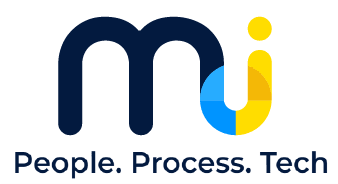Did you know that Custom Software Development can support efficiency, productivity, and overall growth in businesses? If you’re an entrepreneur or a small business owner looking to uplevel your business, then software development may be the best option.
At MI Group, At MI Group, our software development lifecycle process is a step-by-step process consisting of Ideation, Realization, Requirements, Design, Development, Testing, and Deployment.In this blog, we’ll focus on Requirements where we can realize the requirements in accomplishing our goal.
Why Requirements Are Essential: Exploring the Foundation of Software Development
Requirements act as the blueprint directing developers and stakeholders to define, refine, and implement functionalities, ensuring alignment with objectives, and driving projects towards success. Whether you’re a project manager, a software engineer, or a client with specific needs, clear requirements are the cornerstone of effective software development.
Here are the five steps to consider in realizing the requirements for the project:
- Listing Every Single Requirement: The initial step in the requirements gathering phase is to list down every single requirement that the software should fulfill. This process involves comprehensive brainstorming and discussions with all stakeholders to ensure that no critical functionality or feature is overlooked. It is crucial not to limit ideas at this stage. Stakeholders must feel encouraged to express their visions and imaginations freely, which can lead to innovative features and a more comprehensive software solution.
- Understanding User Jobs: One of the key aspects is understanding the “jobs” that users will perform using the software. Different users may have distinct roles and tasks when utilizing the application. Identifying these jobs helps in defining user stories and use cases, which form the basis for capturing specific requirements.
- Modularizing Requirements: As the requirements are gathered, they must be organized and categorized to make sense of the vast amount of information. Modularizing requirements involves breaking them down into smaller, manageable components or groups. This process enables a better grasp of the project’s scope and allows for a more systematic approach to software development.
- Visualizing the Software: Once the requirements have been thoroughly documented and organized, the development team can move on to the next phase – creating a visual representation of the software. This typically involves designing wireframes and prototypes that illustrate the user interface, user interactions, and overall flow of the application.
- Iterative Process: Requirements gathering is an iterative process. It involves constant collaboration and communication between the development team and stakeholders. As the software evolves and stakeholders gain better insights, requirements may change or new ones may emerge. Therefore, maintaining flexibility and adaptability during this phase is essential to accommodate evolving project needs.
To develop the phases to succeed in development, we must incorporate the realization of our project requirements to successfully achieve our goal. Your goal is our guiding compass to success.
Stay tuned for Part 3 of our series, where we dive into the next stage of the System development process: Design.
If you’re ready to transform your vision into reality, then explore the next step with us—Design at MI Group Co., we don’t just create software; we craft solutions that redefine possibilities. Schedule a consultation with MI Group.


